Krk Rp8 G3 Vs Yamaha Hs8
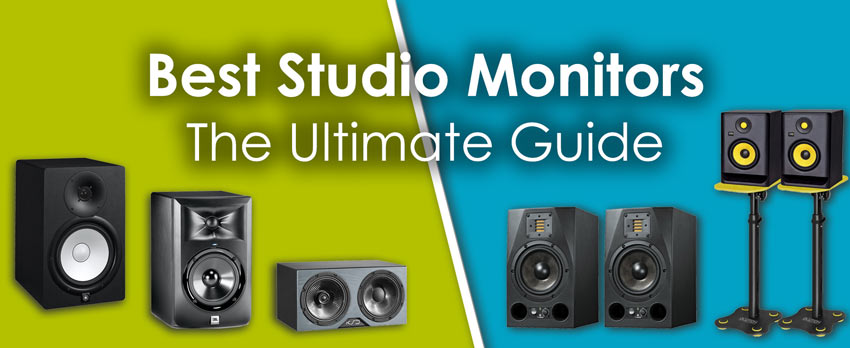
Y'all dearest creating smashing-sounding music at home – whether it's sultry shine Stevie Wonder covers, rambunctious Rachmaninoff rhapsodies, or big bassy club hits – so how exercise you ensure that you lot are getting the best sound out of your mixes?
One of the best ways is with a pair of studio monitors.
On my journeying as a composer and sound engineer, I find being able to listen to my music through studio monitors is vital for producing the sound I want to create. Information technology can be a pleasure that is 2d to none.
Yous notice minute details yous merely would not have heard through headphones or in-built computer speakers – these listening methods don't provide the same accuracy a set of studio monitors can.
You may be in the process of setting up your abode studio and getting ready to accept it to the side by side level. Choosing the right pair of studio monitors tin be catchy. However, we're here to boil down some key criteria, which will make it easier to cull the best studio monitors for your needs.
What are Of import Features to Look For in Studio Monitors?

Although specifications of studio monitors can assistance you narrow your choices, they don't tell you how your monitors truly audio – so take them with a compression of salt.
Ultimately, trust your ears and the gear of professional or beau musicians. There'south no substitute for conscientious and critical listening.
What Things to Consider Before Ownership Studio Monitors?
Best Studio Monitors
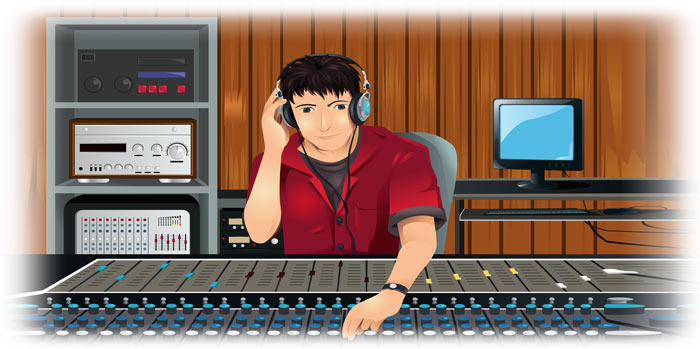
In this section, nosotros'll talk about the best studio monitors available on the market today, covering several toll ranges so that you can choose based on your budget.
If you lot're new to this market and don't know all the nuances of choosing the 'right' set up of monitors, we've prepared an in-depth buying guide that will help you find your perfect set of speakers even if two days ago you didn't know what studio monitors are!
Best Studio Monitors Under $200 (for Beginner Studios)
Presonus Eris four.five
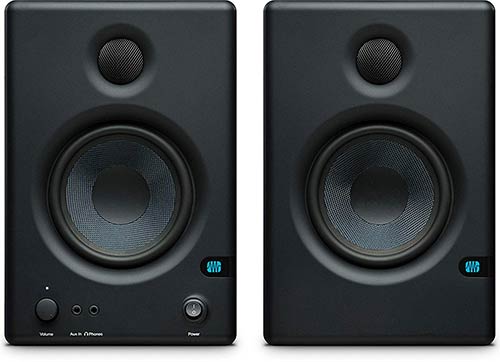
These monitors are unique to this list as they have a 4.v-inch woofer, which is different many other speakers.
When I listened to these, I tried not to think of them equally but media speakers as so many reviewers before me had mentioned. To my surprise, they were quite accurate!
The highs were very crisp, and whilst the bass wasn't birthday there, I did not experience similar information technology was unnoticeable. The mids were very rich and warm, and the heart image was well divers.
I would place these more in the reference speaker category as they are good for beginners who are starting out on their studio monitor journeying.
They also accept some like shooting fish in a barrel to understand trim controls on the back of the speaker and then that the sound tin can be hands tweaked and an 'Acoustic Space' switch which allows you to cut volume levels depending on your speaker positioning – making them easy to adjust to any room.
Along with this, there are multiple TRS and RCA inputs as well as a 3.5mm output to allow for easy headphone monitoring. Altogether a well-thought-out product.
Pros
- Easy to tweak the audio
- Acoustic switch
- Multiple I/O
Cons
- Bass may be a bit weak
- Some might observe the highs a lilliputian harsh
Behringer STUDIO 50 USB
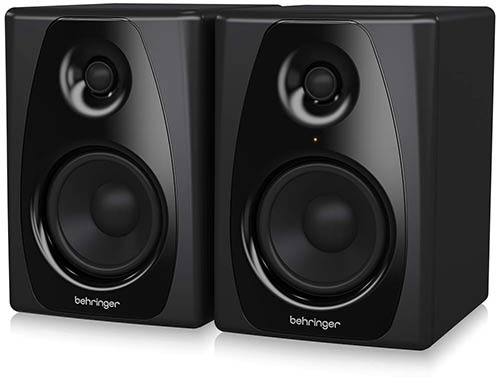
Platonic studio monitors for beginners, the Behringer Studio fifty USB will allow you to gain that professional studio experience without breaking the bank.
To my ears, these speakers lack power in the bottom-cease, whilst the mid and high ends tend to overpower. Yet, if coupled with a subwoofer they could be very impactful as the clarity is still very good across the spectrum.
As suggested in the name they also incorporate a neat USB-input for direct connexion of digital stereo sound sources equally well as two analog inputs of XLR and one/four" TRS connectors that can be combined for multiple source playback.
Pros
- Cheap
- USB Input
- Multiple playback
Cons
- Weak bass response
- Overpowering mids and highs.
Mackie CR4-Ten
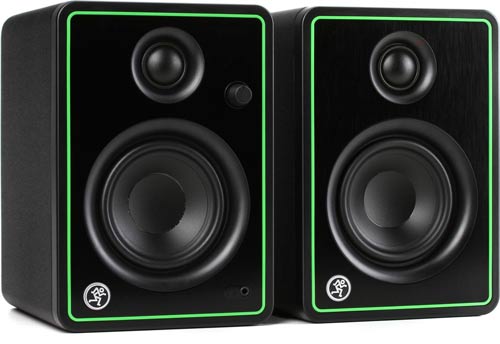
Similar the Behringer'southward, these Mackie CR4'due south are ideal if you are just starting out. Mackie'southward college-tier range of products are top quality, withal fifty-fifty their upkeep products are surprisingly decent. However, there is a bit of care to be taken when listening to these.
With a frequency response of 70Hz to 20kHz the CR4'southward are plainly not the best on the list – the frequency response is non as apartment as ane would wait from bigger speakers and the depression-terminate is severely lacking.
These are the manufacturer'south compensations for the small 4-inch woofers and great looking pattern. In spite of their inaccuracy, the CR4'southward sound fidelity is more than acceptable for their small-scale, meaty blueprint.
One of the best features is that the power and book controls are located on the front of the speaker, which is not bad for ease of utilise. An added AUX input allows yous to plug in another device.
The back of the speaker has both TRS and RCA inputs to let for multiple sources.
Pros
- Smashing looking blueprint and excellent build
- Front power and volume controls
- Aux input
- First-class price signal
Cons
- Not exactly the about accurate of monitors
- A tad on the smaller side
All-time Studio Monitors Under $500 (for Intermediate Studios)
Yamaha HS5/8
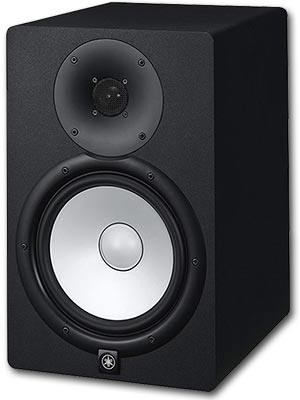
These iconic studio monitors are based on a previous Yamaha version called the NS10'south, which were discontinued in 2001. The HS8'south became the replacement for the NS10's and mimic their design with the signature white coned woofers.
These speakers were the workhorse of my musical output for the past 10 years and when I downsized my studio and included the HS5's, I was surprised at but how similarly the speakers behaved.
The frequency response of the HS5s stands at 54Hz – 30kHz whilst the HS8s are listed at 38Hz – 30kHz. This means that the HS8 has a better depression-frequency response – which is proven both past theory and by the ear test when I listened to them. This is something you would await from a speaker that has a bigger viii" cone (the HS5 has a five" cone – hence the name).
What is true of both the HS8 and HS5 monitors is that they are reliably accurate. They are as well very durable and purchasing them will consequence in a long, trustworthy relationship between you and your monitors.
The merely downside is that the trim and book controls are on the rear of the cabinet for both models.
Pros
- Actually affordable price point for the quality you receive
- Ideal flat frequency response
- Legendary heritage; an aspiring mixing engineer's perfect companion
Cons
- Non quite stellar depression-frequency response on the HS5 model
- Volume and trim controls on the rear
JBL 305P MKII
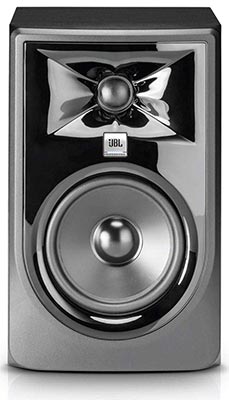
Then, having listened to these badboys in the store listening room, I was actually impressed past the punch they gave out.
Now it may take just been me, the surroundings I was listening in or the demo pair setup being incorrectly counterbalanced, but there was a slight hiss I experienced when listening to them.
This is non uncommon amongst stereo monitors and oft can be something you lot become accustomed to as fourth dimension goes past – it doesn't really hinder your mixing ability unless it becomes overpowering.
In this case, information technology didn't affect my monitoring experience and I felt that they had a great, broad detailed stereo epitome.
JBL take been leaders in this field for a long time and have a patented Prototype Command Waveguide technology built into the speakers that allows for an accurate and flat response with a flake of low-end kick.
These five-inch woofer monitors are a little taller than most, which allows for the bass heave, and are guaranteed to be durable having undergone an unheard-of 100 hours of testing without failure before reaching shop shelves.
Pros
- Nice low-terminate response
- Hullo-tech image control
- Durable
Cons
- Potentially difficult to balance
KRK Rokit 5 G4

If you've ever watched a video from a music producer on YouTube, y'all'll more than likely see a gear up of speakers with yellowish cones in the groundwork.
Yup, these are the KRK Rokit range and they are hugely popular amongst music producers — especially those specializing in electronic, hip-hop and pop.
Notwithstanding, the KRK Rokit range is versatile and is suitable for all genres of music-making.
For those starting out and really wanting to make leaps and bounds in their mixing ability I would definitely recommend the Rokit five G4's as a starting indicate.
KRK's normally take a reputation for being boomy and bass-heavy however, when I listened to these they were incredibly apartment and up at that place with the Yamaha HS5's in terms of frequency response.
They contain infrequent low-end extension (loftier-precision bass ports in these speakers) and superb accuracy, boasting a range of 42Hz – 40kHz whilst not losing focus on well-divers mids.
Pros
- Great flat frequency response
- Groovy value for money
- Comes in 2 different designs (black and white)
Cons
- Rear mounted book and trim controls
K-Audio BX5 D3
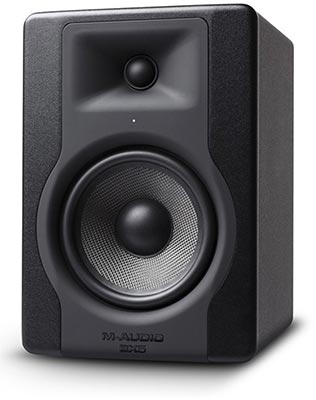
When I picked these up to move them at my local audio store the Thousand-Audio BX5 D3's felt a lot heavier and solid than most five-inch monitors. Needless to say, the build quality on these speakers is swell and they can go toe-to-toe with any other make out there.
The stereo image is fantastically broad and noticeable when compared to other 5-inch speakers on this list. This element is very impressive for a nearfield monitor.
With a frequency range of 52Hz to 35kHz, these monitors provide clarity across the spectrum. They are small but powerful, 100W of power to be exact which could annoy the neighbours if yous crank up the volume.
Notwithstanding, the acoustic space control on the rear of the speakers really takes care of any booming bass, and the dual i/4″ TRS and XLR outputs allow you lot to take different sources to connect with.
Pros
- Groovy build quality
- Small and powerful
- Dual connections and acoustic infinite control
Cons
- Rear trim controls
- Might annoy the neighbours
Best Studio Monitors Under $1000 (for the Serious Abode Studios)
Adam Audio A7X

These monitors are a great mid to loftier-end purchase for the more avant-garde sound engineers out there. If you've already had a set up of stereo monitors, then these are a pair to aspire to.
I found these take infrequent transient response, which is a definitive characteristic of all the Adam Sound AX serial monitors, which are powered by the X-Art tweeter design.
While Adam Audio is a relatively new company past studio monitor standards (established in 1999) the precision German applied science that their models boast has built their reputation as a reliable and premium manufacturer.
The A7X boasts a frequency response with a high stop of 50kHz and a low stop of 42Hz. A beautifully designed sleek black chiffonier ways these speakers look good in any setup.
They also have front panel controls as well as front bass ports. These are of import equally they allow you to better interpret bass frequencies when the speakers are placed closer to walls.
Pros
- Cracking transient response
- Loftier-cease sounds well-baked and make clean
- Front bass ports and front panel controls
Cons
- A piffling more expensive than other monitors on this list
- May take a while to get used to if you lot have listened to other monitors
Mackie HR824mk2
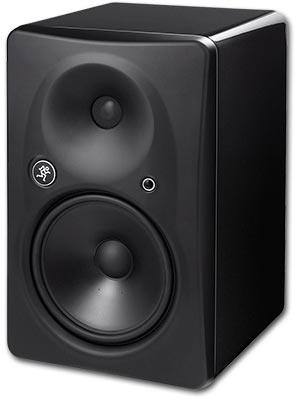
These monitors are truly outstanding for their price bespeak. Whilst being on the higher-end of the cost scale amid this list, they are certainly worth it. At that place are two primary factors that actually make the HR824mk2's stand out:
i) Instead of a bass port (like the KRK's), these have a passive radiator installed in the rear of the monitor. This allows for accuracy in the lower frequencies.
This is what'due south known every bit a sealed monitor and not a ported monitor. Ported monitors are designed to accentuate the depression-cease, which can bring about inaccuracy when focusing on bass.
2) The tweeter is surrounded past a wide-dispersal horn. This spreads the high frequencies out further around the stereo image, making the middle image feel deeper and more than accurate.
Besides that, the Mackie boasts a zero-border bamboozle that minimizes sound diffraction and internal damping that eliminates midrange artifacts – really solidifying the fact that these are truly high-terminate, authentic monitors.
Pros
- Highly accurate
- Passive radiator for accurate low-end frequencies
- Wide-dispersal of high-end frequencies
Cons
- A petty more expensive
- Some people experience longevity issues 4-v years down the line
Genelec 8030c
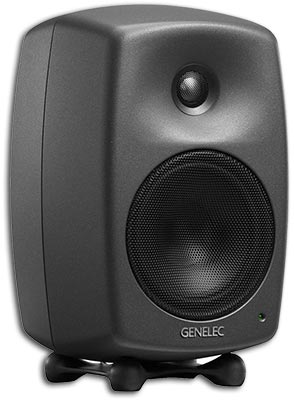
This company has been creating such fantastic monitors for such a long time that annihilation with the Genelec name on it tends to be a life-long purchase. This is no dissimilar with the 8030c's.
They are the virtually solid five-inch woofer monitors on this listing cheers to their die-cast aliminium enclosure. They brand up part of the 8000 series from Genelec that are so synonymous with durable, reliable, high-end studios all over the world.
These are such clean sounding monitors that allow you to not only mix music, but take on dialogue or sound pattern jobs too.
They practise accept a little getting used to as the transparency is that clean, but cheers to trim controls on the back of the cabinet you can adjust the low-end if necessary.
The merely downside is that there are simply XLR inputs on the dorsum of the monitor, but it is nice that this is placed facing upwards and so that your cables are out of the mode of any trim command usage.
They also come up with a beautiful futuristic isopod stand up that increases separation from where they are placed.
Pros
- Clean sounding and incredibly accurate
- Durable and reliable
- Solid enclosure
What Are Studio Monitors?
Studio monitors are in essence a set of speakers designed to playback the music you create. However, they aren't only any fix of speakers.
They are highly accurate speakers designed to analyze the best (and worst!) parts of your sound. Technically they are different from other sets of speakers and here's why.
Agile vs Passive Monitors
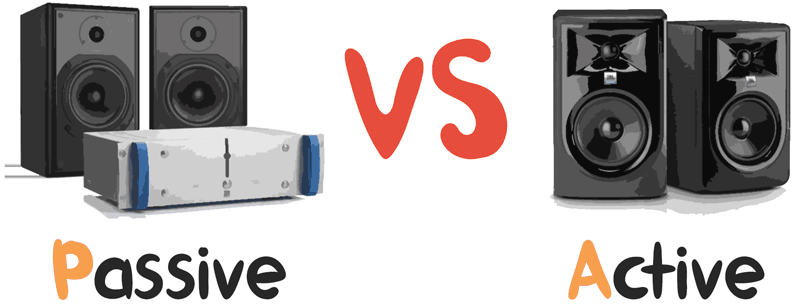
Studio monitors are commonly divers every bit either agile or powered monitors. Agile ways that they have a ability amplifier built into the speaker chiffonier (the body of the speaker itself).
The alternative is passive speakers, which require a separate power amplifier to work – much like home stereo or hi-fi speakers.
A quick fashion to check whether your speakers are active or passive? The back of an agile speaker will always have a mains outlet.
Active speakers allow for higher accurateness in sound because each of the speaker components has its ain individually powered amplifier.

The woofer (the big cone at the bottom of the speaker), the tweeter (the smaller cone at the top of the speaker) and the mid-range speaker (not that common, but information technology is available on some speakers) all have their ain powered amps.
It allows for increased separation in frequencies and a greater dynamic response – the differences between pianissimo and fortissimo tin really jump out at you lot with the correct set of monitors.
Passive monitors, on the other manus, crave a separate powered amplifier, merely they have their own advantages too.
Because of this requirement, they allow you some flexibility in customizing the components and fix up of your multi-speaker array. Additionally, they are normally cheaper.
High Quality Technology
Due to the intention of monitors to give the listener the truest of sounds, they require intricate engineering science.
The modern monitor is made up of three major parts – we've already mentioned ane of them: the drivers (woofers and tweeters). The other ii are the cabinet and the electronic circuitry.

The final part for the active monitor is the separate powered amplifiers for the drivers. This exhaustive and comprehensive engineering science highlights 1 of the main differences betwixt studio monitors and dwelling stereo speakers – price.
The detail and refined quality of monitors' components naturally coincide with a steep incline in toll relative to your average hello-fi speaker. That beingness said, if you lot have a limited budget you can still discover a pair that will do the job for you.
Drivers
As we mentioned briefly before, at that place are two types of main drivers for the studio monitors: woofers and tweeters. This is known as a two-way monitor setup.
The less mutual three-fashion monitor setup has an additional midrange driver.
Woofers handle the low, low-mid and midrange frequencies whilst the tweeters handle the high-mids and high frequencies. In the 3-way monitor the midrange driver focuses solely on midrange frequencies assuasive for fifty-fifty greater separation.
You can also add a subwoofer, which is housed as a separate speaker, which would handle the very depression frequencies. It is not entirely necessary to have one, unless yous are producing bass-heavy music such as hip-hop or electronic dance.
Woofers, midrange drivers and subwoofers are all usually constructed in a conical shape with a dust cap at the center and a tough, but flexible surrounding that allows the cone and voice curlicue to move in and out when sound waves are pushed through the speaker.
Cabinets
The cabinet is the housing for all the internal parts of the monitor but is just as of import as the inner workings.
The material of the chiffonier tin affect the performance of the drivers, and engineers ensure that the shape and composition of it is as non-resonant every bit possible.
For this reason, monitor cabinets are built from sturdy materials such equally metal, or dense plastics with internal bracing and joints. They are also made from wood composites to eliminate unwanted resonance.
Why and When You Might Need Them?
Flat Indicate
Unlike habitation stereo speakers which frequently contain born tweaks to heave the bass response or a like equalizer (EQ) issue, studio monitors aim to produce audio signals that are flat across the frequency spectrum.
This means that your bass, mids and highs are consistent and the result is the same no thing the volume level – studio monitors don't emphasize 1 grouping of frequencies over another.
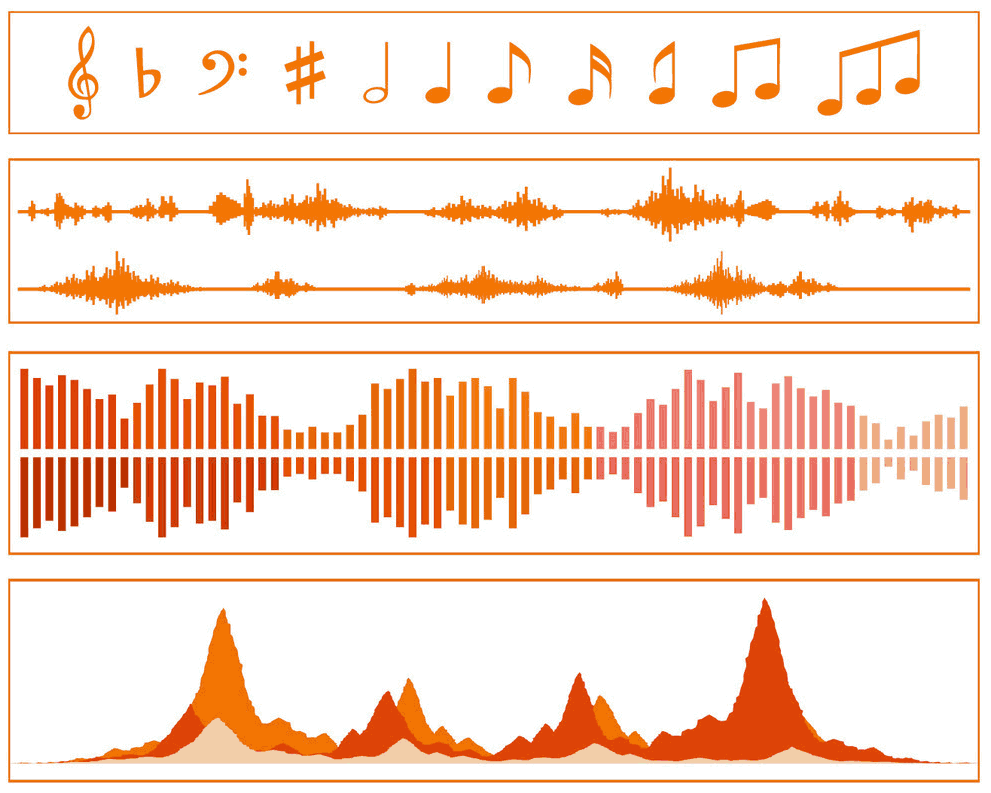
However, not all 'flat response' monitors prevent the sound from beingness colored. Unfortunately, all speakers color the sound to varying degrees – if they didn't, there would be no demand for different brands!
What a monitor volition provide is a reference that is accurate enough for a producer to brand critical judgements about a mix that will transfer to being played on other sound systems without sounding terrible (if it sounds good on these, information technology should sound pretty good on anything – which is role of the process of mastering).
Consider a set up of speakers that understates a item bass frequency past, say, 2db. If an engineer is mixing in this range, they volition compensate for this 'dip' in the frequency range by boosting this frequency. On this set of speakers, this volition sound correct.
If this were then played on a more 'neutral' prepare of speakers, so that frequency would be 2db louder in the bass frequencies than information technology needed to be. Therefore, we can see how each prepare of monitors may color the audio in a unlike way.
Improve Your Mix
Being able to accept clarity of sound is a real privilege in a habitation studio setup.
Whether you are playing for your own pleasure or creating tracks intended for commercial use, the ability to punch down to the itty-fragmentary-gritty details of any audio you create is and then vital.
Studio monitors remove a lot of guesswork and should amend everything y'all exercise, whether that'south mixing or playing your keyboard through them.
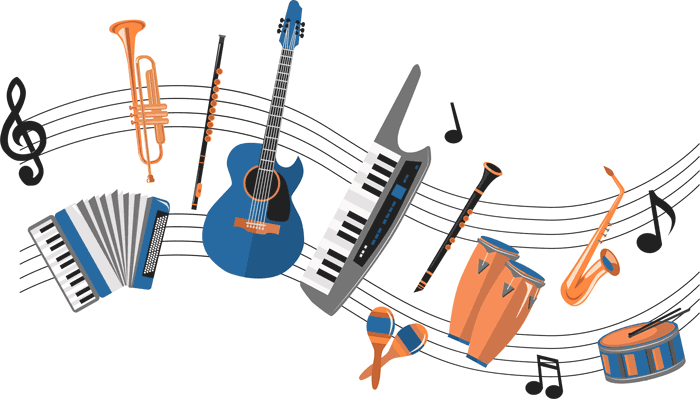
We all know that certain digital pianos are able to create great clarity of sound nowadays, and although some people may think that they don't live up to the same quality as acoustic pianos, their practical use in a home recording studio is unmatched when you lot want to create great sounding piano music.
Using studio monitors will allow you to really savor the dynamic range and clarity that some digital pianos (and other musical instruments) are capable of.
![]() Loading ...
Loading ...
You might likewise like:
Build a Abode Recording Studio With Me: Step-past-Step Guide
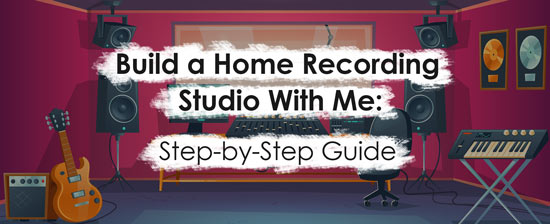
Selecting the Best Sound Interface for Your Home Studio

What'due south the Best Microphone for Vocals | Music | Streaming | Podcasting?

Best Studio Headphones: Everything You Need to Know

Krk Rp8 G3 Vs Yamaha Hs8,
Source: https://www.pianodreamers.com/best-studio-monitors/
Posted by: olearyliffir.blogspot.com

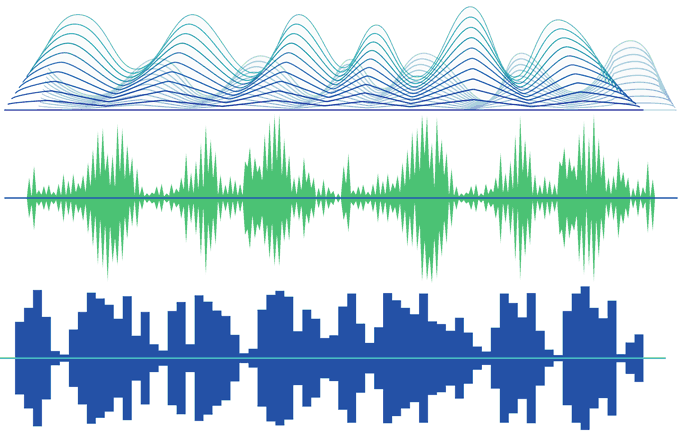
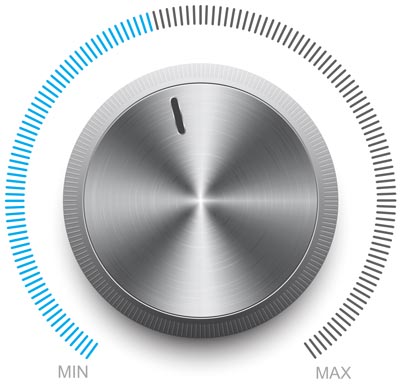
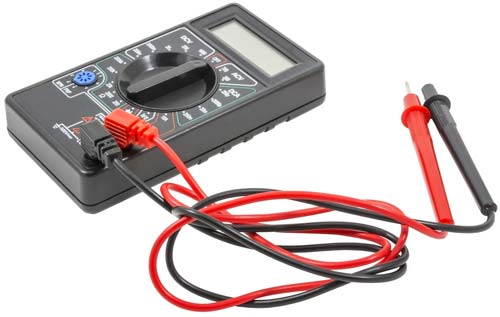









0 Response to "Krk Rp8 G3 Vs Yamaha Hs8"
Post a Comment